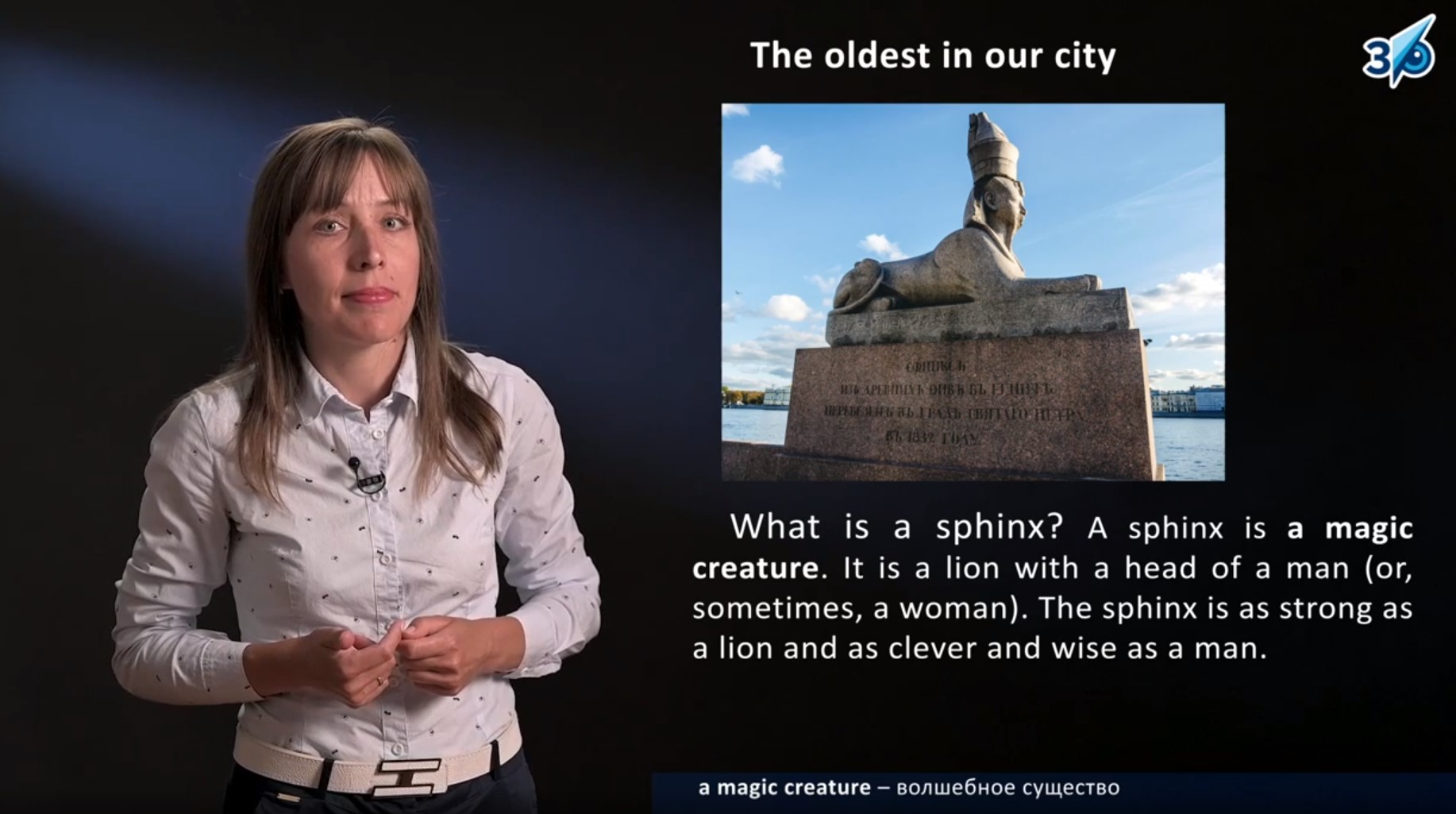The History of St. Petersburg. The Cultural Heritage of the Ancient World
Авторский курс по английскому языку "История Санкт-Петербурга. Культурное наследие Древнего мира"
Преподаватели: Анна Николаевна Ратькова

Авторский курс по английскому языку "История Санкт-Петербурга. Культурное наследие Древнего мира"
Преподаватели: Анна Николаевна Ратькова

Курс посвящен культурному наследию Древнего мира в Санкт-Петербурге и построен на основе параллелей с курсом истории 5 класса.
Мы рассмотрим самые яркие отголоски цивилизаций Древнего Египта, Индии и Китая в нашем городе. Узнаем секреты мастеров Древней Греции и Рима. Научимся понимать "музыку, застывшую в камне". Прислушаемся к монументальным шагам стиля ампир. Посетим залы античной керамики и скульптуры Эрмитажа. Задумаемся, какие мысли и чувства хотел передать нам создатель картины "Последний день Помпеи".
Курс создан для учащихся 5-6 классов, но будет также интересен ученикам 7-9 классов.
Регистрируйтесь и выбирайте курс — он сразу появится в вашем личном кабинете
Проходите уроки курса, смотрите видео и дополнительные материалы
В курсе нет дедлайнов: можно начать учиться в любое время и выбрать удобный темп
Sphinx is the one of the best-known symbols of Ancient Egypt. Sphinxes are magic creatures, but are they kind or evil? Do people like them or are they afraid of the sphinxes? How did the sphinxes appear in St. Petersburg? What secrets do they keep? You will find the answers to these questions in lesson 1.
When we talk about the past, we mostly use Past Simple. In Part 1 of lesson 2 we will look at the Past Simple of regular and irregular verbs. We will also learn to ask questions in Past Simple. In Part 2 we will practise dates and different time expressions that will make our story clear and interesting.
To admire Egyptian sphinxes, pyramids and obelisks, you do not need to travel to Egypt. You can see all these wonders in Tsarskoye Selo, a small town which was a summer residence of the Romanovs.
To make our story natural and clear, we use different constructions. When we use Passive, we usually do not tell who did the action: the house was built in 2015. Passive is an easy way to focus on the object and details: was made of stone, was created in 1826, is decorated with reliefs. We often use Passive when we talk about ourselves: I was born in St. Petersburg; I am interested in art.
St. Petersburg is a city of lions, but how many lions are there? Why are they so different? Why is a lion holding a ball? Are lions symbols of victory or defeat? Are they for decoration only? As you watch and listen, choose your favourite lion!
Monuments to animals look cute and heart-warming. However, they are not just decorations – they tell us about the history of the city and its people. In lesson 6 we are going to discover the meaning behind the best-known monuments to animals: cats, dogs, birds, hares, camels… You can also try to design your own monument to an animal.
Greece was great. Ancient Greece was a small country, but its people had great ideas. Today, we still admire Greek sport, medicine, drama, politics, poetry and art. We call them classic. In lesson 7 we will discover three secrets of Greek architects and compare classic buildings in St. Petersburg with ancient examples.
The Roman Empire was one of the largest in history. The Empire style was heavy and impressive because it celebrated great victories of Roman emperors all over the Ancient world. Napoleon Bonaparte brought this style to France. After the Patriotic War of 1812, the Empire style became very popular in Russia. Buildings, arches and columns that decorate the central part of St. Petersburg were created in the Russian Empire style.
In lesson 9 we are talking about the Antique collections of the Hermitage: ceramics (Part 1) and sculpture (Part 2). Did the ancient craftsmen use the potter’s wheel? How did they make bronze statues? Have marble statues always been white? We will also learn where the name “Hermitage” comes from and who started collecting the works of art.
“The Last Day of Pompeii” by Karl Bryullov is one of the greatest paintings of all times. It shows a tragedy of real people, but also their love and care about their families. It focuses on the classic beauty of the Ancient world that was forgotten in the Middle Ages. Everyone will find something personal in the painting, but we will also discover some real stories and names.
Учитель английского языка